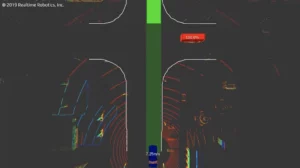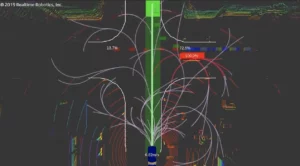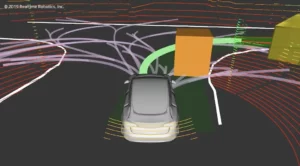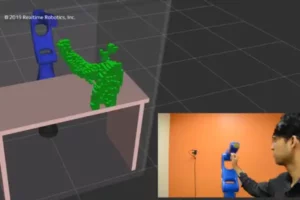Robots are touted as the solution to multiple manufacturing problems from increasing productivity to solving the labor shortage. However, the promise of autonomous machines currently lags the underlying technology. One of the key constraints with robotic automation is the risk of collisions. Robots need a way to work in harmony with other machines and humans. AI is lauded as the answer to all automation woes; however, when it comes to creating a workforce of smart robots, motion planning is essential.
So, what is motion planning?
Motion planning is a multi-step process that can be used by a robot to position itself to perform a specific task. Motion planning relies on deterministic decision-making as it can’t afford even occasional failures because failures lead to collisions.
Here at Realtime, we have designed a custom hardware and software solution that makes rapid motion planning decisions allowing robots to work safely and productively with humans and other robots. Our collision-free motion planning platform is versatile and continuously accommodates changes occurring in a workcell. Robots can evaluate millions of alternative motion plans to avoid collisions and choose the optimal path, all within milliseconds. This allows users to operate single or multiple robots safely at full speed without the risk of collision. The combined features in the platform empower robots to function seamlessly across many deployments with minimal programming and reprogramming during implementation.
Where does AI fit?
AI, unlike motion planning, relies on probabilistic decision-making as some failure can be tolerated. AI and Machine Learning (ML) are perfect for many robotic tasks that accompany motion planning. For example, AI is a vital part of computer vision algorithms that process data from cameras, identify objects, and predict future object behaviors. It’s also critical for determining how to grasp objects. With these tasks, occasional failure is acceptable.
Our rapid motion planning technology allows a robot to see moving obstacles in its environment and immediately update the trajectory to avoid the obstacle, while still achieving its goal. The technology essentially opens the eyes of robots.
Rapid motion planning is essential to accelerate and expand robotic automation, as it creates intelligent robots that can operate at speed without the risk of collision. The technology, coupled with AI and ML, will be instrumental in delivering on the promise of autonomous machines.





